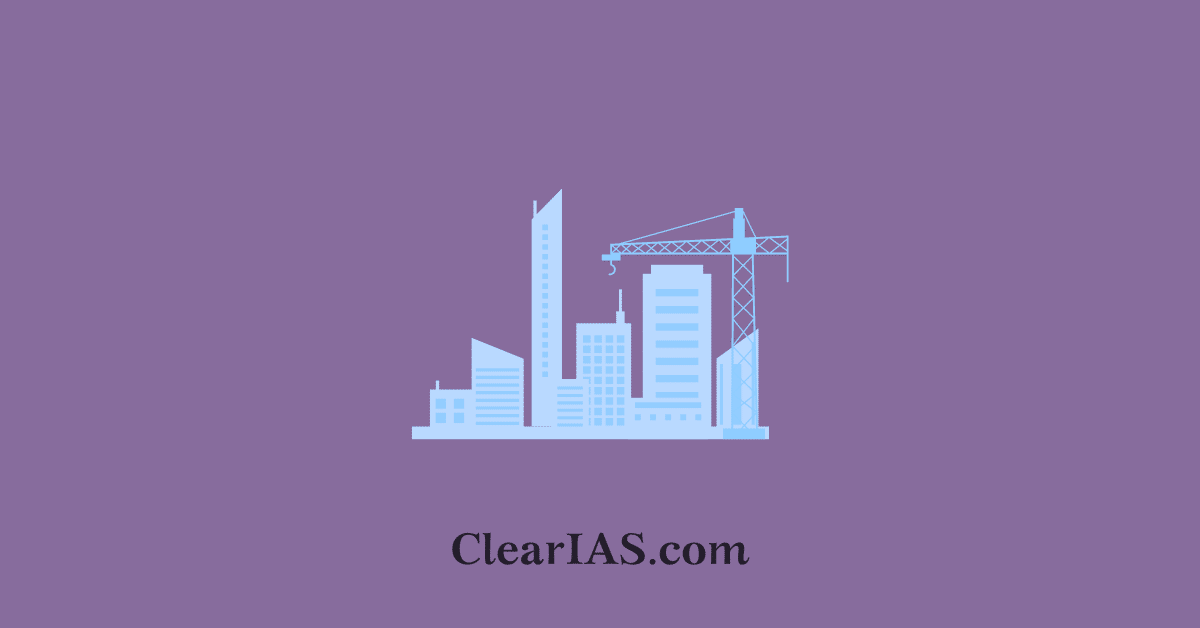
Factors Responsible for the location of primary, secondary, and tertiary sector industries in various parts of the world vary depending on the sector and the region. These factors include physical, economic, social, and historical considerations. Read here to understand the combination of factors.
Factors Responsible for the location of primary, secondary, and tertiary sector industries in various parts of the world (including India) is a topic mentioned in General Studies Paper 1(GS1) for UPSC Mains.
Basic concepts related to Primary, Secondary, and Tertiary Sectors are covered in our post on Sectors of Economy: Primary, Secondary, Tertiary, Quaternary, and Quinary. In this section, we shall see an outline of factors.
In the coming posts, we shall see some specific examples of certain industries from the UPSC exam perspective. We have used NCERT texts for geography as the starting material, taking extra inputs from online and offline sources.
Factors Responsible for the Location of Primary Secondary and Tertiary Sector Industries
The location of industries in different sectors (primary, secondary, and tertiary) is influenced by a combination of factors that vary depending on the sector and the region. These factors include physical, economic, social, and historical considerations.
Primary Sector Industries
- Natural Resources: Industries involved in extracting raw materials, such as agriculture, mining, and forestry, tend to be located near the sources of natural resources.
- For example, agricultural activities are usually situated in regions with fertile soil and favorable climatic conditions.
Secondary Sector Industries
- Raw Material Availability: Industries like manufacturing and construction rely on the proximity to raw materials. Regions with easy access to raw materials, such as iron ore for steel production, tend to attract these industries.
- Transportation: Proximity to transportation networks, including roads, railways, and ports, is crucial for the movement of raw materials and finished products. Industries often locate near transportation hubs to minimize costs.
- Labor Availability: Labor-intensive industries are often located where there is a skilled or low-cost labor force. Textile and garment industries, for instance, may be located in regions with a large workforce.
- Energy Availability: Industries requiring a significant amount of energy, like heavy manufacturing, may be located near energy sources such as coal, hydroelectric power, or oil and gas.
- Market Proximity: Industries that produce consumer goods may locate close to major markets to reduce transportation costs and reach consumers efficiently.
- Government Policies: Incentives and regulations set by governments can influence industry location. Tax breaks, subsidies, and other policies can attract industries to specific regions.
Tertiary Sector Industries
- Market Demand: Service industries, such as retail, hospitality, and healthcare, are often located in areas with high population densities and strong consumer demand.
- Access to Customers: Proximity to potential customers is important for many service industries. Businesses like banks and restaurants are often located in commercial and urban centers.
- Transportation and Accessibility: Service industries need good transportation links to serve customers effectively. Airports, highways, and public transportation play a role in location decisions.
- Infrastructure: The availability of modern infrastructure, including communication networks, is important for service industries that rely on information and technology.
- Economic Base: Tertiary sector industries are often concentrated in urban areas with diverse economic activities and a larger consumer base.
Industrial locations are complex. These are influenced by the availability of many factors. Some of them are raw materials, land, water, labor, capital, power, transport, and market.
For ease of convenience, we can classify the location factors into two: geographical factors and non-geographical factors.
Geographical Factors

- Raw material: Availability of natural resources that can be used as raw material.
- Technology: To turn the resource into an asset with value.
- Power: To utilize the technology.
- Labor: Human resources in the area who can function as labor to run the processes.
- Transport: Road/rail connectivity.
- Storage and warehousing.
- Marketing feasibility.
- Characteristics of land and soil.
- Climate.
- Precipitation and water resources.
- Vulnerability to natural resources.
Explanation:
- Raw materials are one of the important factors in an industrial location. The mere location of industries itself may be determined by the availability or location of the raw materials.
- Power – conventional (coal, mineral oil, or hydroelectricity) or- conventional is a necessity for any industrial establishment.
- The availability of labor or a skilled workforce is the success mantra for the growth of all industries.
- The availability of easy transportation always influences the location of the industry. So the junction points of waterways, roadways, and railways become humming centers of industrial activity.
- The finished goods should reach the market at the end of the process of manufacturing. Thus nearness to the market is an add-on quality in the process of selecting a location for industry.
- The availability of water is another factor that influences the industrial location. Many industries are established near rivers, canals, and lakes, because of this reason. Iron and steel industries, textile industries, and chemical industries require large quantities of water, for their proper functioning.
- The site that is selected for the establishment of an industry must be flat and well-served by adequate transport facilities.
- The climate of the area selected for the industry is important, very harsh climates are not suitable for successful industrial growth.
Non-geographical Factors
- Capital investment.
- Availability of loans.
- Investment climate.
- Government policies/regulations.
- Influence of pressure groups.
Explanation:
- Capital or huge investment is needed for the establishment of industries.
- Government policies are another factor that influences industrial location. The government sets certain restrictions in the allocation of land for industries to reduce regional disparities, control excessive pollution, and avoid the excessive clustering of industries in big cities.
- Industrial inertia is the predisposition of industries or companies to avoid relocating facilities even in the face of changing economic circumstances that would otherwise induce them to leave. Often the costs associated with relocating fixed capital assets and labor far outweigh the costs of adapting to the changing conditions of an existing location.
- Efficient and enterprising organization and management are essential for running the modem industry successfully.
- The location that has better banking facilities and Insurance are best suited for the establishment of industries.
It is rarely possible to find all these factors available in one place. Consequently, manufacturing activity tends to be located at the most appropriate place where all the factors of industrial location are either available or can be arranged at a lower cost.
In general, it should also be noted that both lower production cost and lower distribution cost are the two major factors when considering the location of an industry. Sometimes, the government provides incentives like subsidized power, lower transport costs, and other infrastructure so that industries may be located in backward areas.
Industrial System
An industrial system consists of inputs, processes, and outputs. The inputs are the raw materials, labor, and costs of land, transport, power, and other infrastructure.
The processes include a wide range of activities that convert the raw material into finished products. The outputs are the end product and the income earned from it. In the case of the textile industry, the inputs may be cotton, human labor, factory, and transport costs.
The processes include ginning, spinning, weaving, dyeing, and printing. The output is the shirt you wear.
Industrialization and Urbanization
After an industrial activity starts, urbanization follows. Sometimes, industries are located in or near the cities. Thus, industrialization and urbanization go hand in hand. Cities provide markets and also provide services such as banking, insurance, transport, labor, consultants financial advice, etc. to the industry.
Agglomeration Economies
Many industries tend to come together to make use of the advantages offered by the urban centers known as agglomeration economies. Gradually, a large industrial agglomeration takes place.
Factors Responsible for the Location of Primary Secondary and Tertiary Sector Industries in India
In the pre-independence period, most manufacturing units were located in places from the point of view of overseas trade such as Mumbai, Kolkata, Chennai, etc.
Consequently, there emerged certain pockets of industrially developed urban centers surrounded by a huge agricultural rural hinterland.
- India’s primary sector industries, like agriculture, are influenced by factors such as climate, soil fertility, and water availability.
- Secondary industries often located near raw material sources, such as steel plants near iron ore deposits.
- Tertiary sector industries are often found in urban areas with a dense population and consumer demand, such as cities with IT hubs.
A combination of factors unique to each sector and region shapes the location of industries around the world, contributing to regional economic development and specialization.






GEOGRAPHIC LOCATION AS WELL AS SEA OCEAN AND CLIMATE
sir when i go to print out or save pdf left hand side letters is not show. please check and re -upload it .thank you
Try copy pasting the URL in printfriendly.com.
Like your broadcast
Thank you very mach for give me information for plant location about industry
There is a mistake in point 11 of geographical factors… It might be natural disasters or hazards. Not resources….. .
Am I correct!?
Thank you I was very useful for me and it helped me alot in my project.
Thank you so much
Wow…amzing…thanks a lot sir…..may God bless you alwz…..
Thanks a lot for the knowledge
Thank you so much. It helped me a lot with my hole work
Sir what are the localisation factors for IT Industry in India?